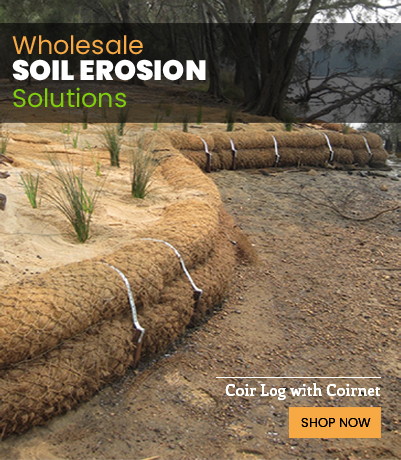The only thing going down your storm drain should be water. However, it’s all too easy for sediment, chemicals, trash, and more to wash down the drain along with the rain. These items get mixed into lake and river runoff and are bad for both the environment and the animals that live in it.
Storm drain filters are great options for preventing non-water runoff in your drains. And there’s a wide variety of natural filter options available to choose from.
Coir Storm Drain Filters
While most storm drain filters are designed to fit under the grate of your drain, acting as a catchall for the type of debris you’re filtering, coir filters are designed as easy-to-install pads. Coir filters go on top of your storm drain and can be easily sized and cut to fit your specific needs and allow water to flow through while blocking other debris easily.
Coir is a natural fiber extracted from coconut husks. Due to its eco-friendliness and availability, it’s become much more popular in recent years as a tool to assist with erosion control, planting and gardening, water retention, and more. Coir storm drain filters are a new addition to the plethora of coir tools available and are easy to clean and maintain. Sweep the sediment from the top and sides of your coir filter, and it’s ready to work again.
Other Filtration Options
Coir storm drain filters are highly practical for a wide variety of uses, but some industries need specialized filters for their storm drains. For this reason, there are inset drains available that can filter items such as oils and heavy metals, trapping these pollutants effectively and keeping them out of waterways. In these cases, a coir storm drain filter might not be the best option. It’s important to do your research and make sure you’re using the right storm drain filter for your needs.
Changing Your Storm Drain Filter
It’s important to make sure you maintain your storm drain filters properly because your drains are essential to water filtration and healthy natural water sources. When and how you change your storm drain filters depends on their condition. At a minimum, you should replace your storm drain filter every three years.
Coir storm drain filters might need to be changed more often, as it’s possible for sediment to build up on top of the filter and prevent water from draining properly. If you notice pooling water or you struggle to remove all sediment from the top of your coir filter, it’s time for a replacement. Other signs it’s time to change the filter include more than a quarter inch of buildup, obvious scum, and several inches of water still standing more than a day after it’s rained.
Your coir drain filter is also biodegradable, so watch for signs that it’s beginning to decompose. While the fibers won’t hurt the waterways, it’s best to remove and replace the filter before it fully dissolves so you can make sure you’re protecting your drain.

Leave a Reply